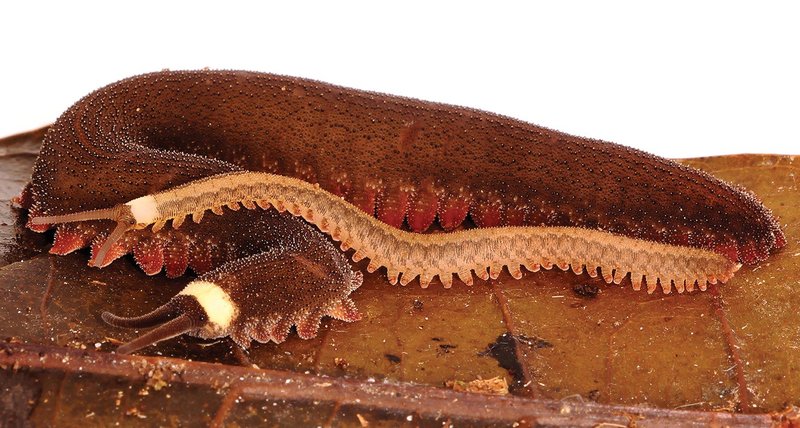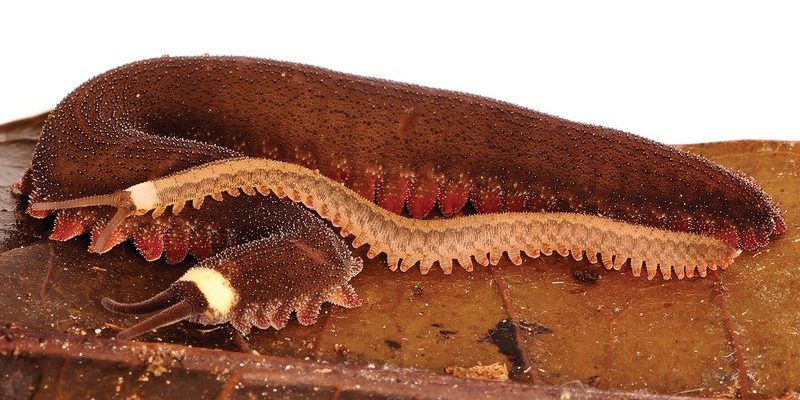
So, how do scientists go about observing these curious critters? Well, it turns out that studying velvet worms is as much about patience and stealth as it is about advanced technology. Imagine being a detective in a dark, damp forest, searching for clues about an elusive creature. Researchers use various methods, from tracking their movements to studying their behavior, all while ensuring they don’t disturb their habitat. Let’s dive into the different ways scientists study velvet worms in the wild.
Finding Velvet Worm Habitats
To study velvet worms, researchers first need to locate where they live. These creatures often make their homes in lush, moist environments, like rainforests and leaf litter. The best way to find them? Scout around for their preferred habitats, which typically include areas with high humidity and decaying plant matter.
Researchers often look under rotting logs or stones, as velvet worms like to stay hidden during the day. Think of it like searching for buried treasure—only instead of gold, you’re hunting for these fascinating little beasts. Velvet worms thrive in darkness, so field researchers often conduct their explorations at night. This is when these critters are most active, making it the ideal time to spot them.
Observation Techniques for Studying Velvet Worms
Once scientists find a habitat, they start observing the velvet worms. One common approach is using **direct observation**, where researchers quietly watch the worms from a distance. This method allows them to see how the worms behave in their natural environment—how they hunt, move, and interact with each other.
Another technique involves **video recording**. By setting up cameras, researchers can capture the worms in action without being intrusive. This is crucial because velvet worms have a unique hunting style; they secrete a sticky slime to trap their prey. Watching this process unfold on video can provide valuable insights into their feeding habits and ecological roles.
Lastly, scientists sometimes use **mark-recapture studies**. This involves capturing a few velvet worms, marking them carefully (without harming them), and then releasing them back into the wild. By recapturing these marked worms later, researchers can gather data on their movements, population size, and even life expectancy.
Collecting Data on Velvet Worm Behavior
Data collection is a crucial part of studying velvet worms. But what kind of information do researchers look for? They focus on various aspects of behavior, including mating rituals, hunting strategies, and even survival techniques against predators.
**Mating behavior** is particularly intriguing. Velvet worms have unique courtship behaviors that scientists study. By observing these interactions, researchers can learn how they choose partners and the importance of pheromones, which are chemical signals used for attraction.
Also important is their **predatory behavior**. Velvet worms are carnivorous, feeding on insects and small arthropods. By watching how they capture prey—usually through that fascinating slime—they can gather data on the efficiency of their hunting methods and their role within the ecosystem.
Here’s the thing: understanding their hunting and mating behaviors can shed light on how these ancient creatures have survived for millions of years.
Environmental Impact and Conservation
Studying velvet worms also allows researchers to assess the health of their ecosystems. Because these organisms are sensitive to environmental changes, they serve as bioindicators—meaning their presence or absence can tell scientists a lot about the ecological condition of their habitats.
In many parts of the world, their habitats face threats from **deforestation** and climate change. By learning about velvet worms and their roles in the ecosystem, conservationists can advocate for protecting these unique environments.
Research findings often lead to **conservation efforts**, aiming to preserve not just the velvet worms but the entire ecosystem they live in. Therefore, every study helps create a broader understanding of how to maintain biodiversity in increasingly threatened areas.
Technology and Velvet Worm Research
Advancements in technology have also changed the way researchers study velvet worms. For instance, scientists use **molecular techniques**, such as DNA barcoding, to study the genetic diversity among velvet worm populations. This is vital for understanding how different species relate to each other and how they have evolved over time.
Moreover, researchers can use **GPS tracking devices** to monitor the movements of velvet worms. These devices, although small and lightweight, provide valuable data on how these creatures travel in their habitats. Tracking their movements can reveal patterns in behavior and help scientists understand how environmental factors influence their life cycles.
The application of technology makes studies more accurate and comprehensive. Just imagine—the same technology that helps track endangered species on land and sea can be used to deepen our understanding of velvet worms in the wild.
Collaborative Research Efforts
The study of velvet worms often involves collaboration among various scientists. From ecologists and biologists to conservationists, many experts contribute to a more holistic understanding of these creatures. This collaborative effort is essential, especially in regions where velvet worms are endangered.
Working together, researchers share their findings, techniques, and resources, creating a network of information that benefits everyone involved. Conferences and workshops are common in the scientific community, where researchers can present their work and discuss the latest discoveries.
Recognizing that studying velvet worms is a part of larger environmental issues brings more attention to their conservation. When scientists pool their knowledge, they can advocate more effectively for the protection of these unique creatures and their habitats.
Studying velvet worms may seem niche, but it plays a crucial role in understanding biodiversity and ecosystem health. These creatures are fascinating not just because of their unique biology but also because they serve as indicators of environmental change. The methods researchers use to study these worms—from observing their behavior to employing cutting-edge technology—help us learn more about life on Earth.
Ultimately, every effort to understand velvet worms contributes to the larger tapestry of conservation and ecology. As we better understand their world, we gain insights that can help protect not just these quirky creatures but the intricate ecosystems they inhabit. In a way, studying velvet worms is like solving a puzzle—every piece of information brings us closer to appreciating the delicate balance of nature. So, the next time you hear about velvet worms, remember that these little guys hold secrets about our planet’s past and future.

